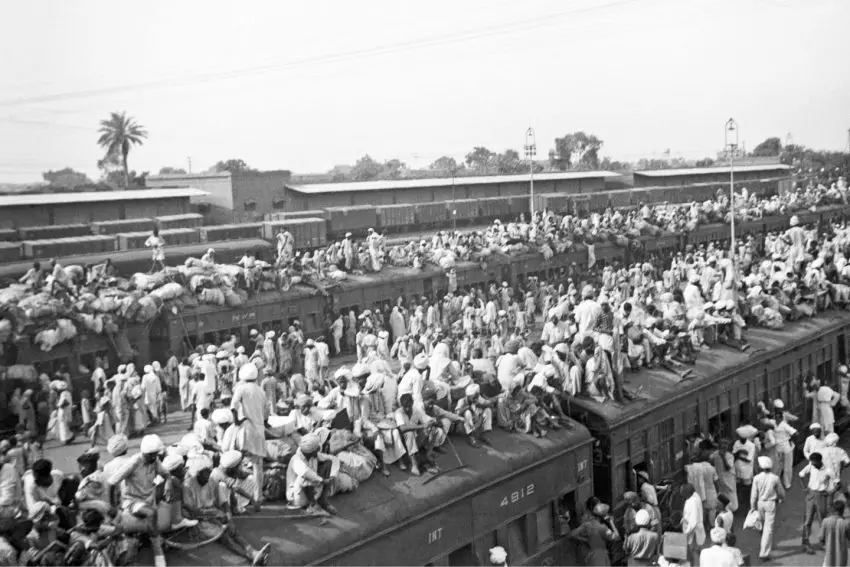Khanewal is a city in the Punjab Area of Pakistan and the assets of Khanewal District. It houses the second busiest railway station in Pakistan.
Name:
It is named after the early settlers who belonged to the “Daha” clan (Jatt clan) and used “khan” in their names. The city, therefore, became known as “Khan-e-wal”.
Location:
Khanewal is located at latitude 30°18’0N and longitude 71°55’0E at an altitude of 128 meters.
History:
Historically, Khanewal is an ancient city whose first foundations were laid by the British Empire due to its reputation as a railway junction. The city was a hub of the Wazirabad-Khanewal railway and connected to the city of Karachi via Lahore. Its straight streets show that it is a city well-planned by the British. The first settlers are said to have been the Dahs, whose names include “Khan”, and the city was named Khan-e-wal after them. After the large public movement led by the famous lawyer Malik Mohammad Aslam Metla Khanewal in 1985, the district was declared. Jamia Masjid Khanewal
Famous for:
A famous cotton-growing industry in Khanewal.
Castes:
The main caste inhabited in Khanewal is Rajputs(Rana)(Rao) Sahu, Sheik, Jatt, Pathan, Awan, Bucha, Sial, Arayin, Niazi, Kamboh, Mahar, Bati, Khokhars, Baloch.
Languages:
In Khanewal city Mix languages are spoken i.e. Siraiki, Urdu, Punjabi, and Pushto as well.
Agriculture:
Khanewal is an agricultural city and is to be found in Pakistan’s ‘Cotton Belt’ – an area covering Khanewal, Multan, and Bahawalnagar. History of Khanewal City The people of Khanewal are mostly spoken for in agricultural actions which are the main basis of profits for the people of the region.
Khanewal Industries:
The industry has also sprung up in and around the city in the last forty or fifty years. Unilever employs over 900 people. Other industries in Khanewal include chemical manufacturing and oil exploration.
Literacy:
The literacy rate is also good in this city as there are many educational institutes here. Educational institutes in Khanewal consist of the Higher Science School and College (16 square blocks), Hawk Punjab College Khanewal School, and the College of Punjab Group of Colleges. Methodical High School, Government. Khanewal Model High School etc.
History of Khanewal Railway Station
According to local lore, the grass from this country made its way to Burma during World War II. When traveling on National Highways from Lahore to Khanewal, you will always find forests and adjacent railway tracks to the west of the highway.
According to legend, Dewan Sanwal Mall, the famous Sikh governor of Multan, appointed Farid Khan as administrator to collect the pasture taxes from the cattle owners and founded the city. Another story says that more than 300 years ago, Daha tribes lived in the area. The settlement was named “khan-e-wal” after the Daha Khans.
Established in 1912:
A canal colony was established here in 1912. Due to the rapid population growth, the modern city was laid out and built-in 16 city blocks. Finally, Khanewal was designated District Headquarters on 1 July 1985. Moreover, a strategic forest area with wild bush trees on the outskirts of the city is ideal for any industrial development.
Location Station:
There is easy access to the rail and road network, major national transport arteries, the farm-to-market road network, and Multan Airport. Kamran Khan, a progressive farmer, says: “There should be a food processing and packaging plant in Khanewal.
History of Khanewal City Its products can be exported to the Muslim world, where the food trade is currently monopolized by countries such as Australia, New Zealand, and the Netherlands. Kamran is very interested in international marketing.
He surprised me by saying that melons with cleanly cut stems are sold in cardboard. Or wooden crates can cost anywhere from 2,500 to 10,000 yen in Japan. “In Pakistan, we have many high-quality fruits that can be sold as gifts all over the world. The domestic airliner earns millions in foreign exchange every year by airfreighting tons of fruit to the Persian Gulf. And then the Middle East, and Britain, the main cargo of which are mangoes produced only in that region.
Animal Transport
Whoever takes the opportunity to go to Khanewal by train has to travel to this city. Through the claw, rickshaw, and animal cart waves. And then the history of Khanewal City and this is the first taste (and smell) of a busy railroad city of animal transport. But first, they must contend with the layers of pushy vendors.
Who roam the station shouldering their wares: children’s clothes from Faisalabad to blue ceramics from Multan. Overcrowding, population growth, power outages, and water shortages have all helped turn this small village into a sprawling slum. Pet transportation is likely to be a pervasive and solvable problem for Khanewal.
Transport Benefits
A common mode of transportation around town is the sturdy and inexpensive Tonga. It is Khanewal’s comfortable vehicle that has become a symbol of the city. “ Moreover tonga (and Rehra) move very slowly and cannot keep up with other traffic, causing congestion on derelict roads. Where right-of-way has already been restricted due to over-encroachment. Horse and donkey droppings are a common cause of tension and fill the air with a foul smell,” says young dentist Madeha Kanwal in number.
Passengers
Sometimes very small boys hold the reins of the horses that drive Tonga laden with passengers and goods. Moreover, accidents involving animals (wild horses or untrained and unwilling donkeys) are the most common scene on urban roads. Besides, many other Tongas and deer registered in the community come from the suburbs to do business in the city daily.
“Tonga is the only deal I can do,” said the Kochwan, who started talking and guided destination-city. Along with the city bus station.”My income is between three and seven hundred rupees a day.” Boarding schools (one for boys, the other for girls) play an important role in the education of the city’s youth.
Abad Muhallah
History of Khanewal City a short walk through the city reveals the desolation of everyone, especially the planning office. The city seems to have no soul. The stadiums are poorly maintained and not overcrowded. The stench from the open sewers lining the stadium is everywhere. Likewise, the road in front of the mosque (between Block 1 and Block 2) remains muddy, and the bowl-shaped village.
Ghrabi Abad Muhallah, more than 125 years old, remains flooded even in the dry season. And torrential rains devastate all the streets and paths of the city, and water pours into the houses.
Frustration of travel
So after the sweat, joy, and frustration of travel, what does the city have to offer in terms of social life or culinary delights? Nothing special. There are certainly no operas, theaters, or concerts, and Khanewal has never been famous for its cuisine.
Finally, you work up an appetite, many restaurants serve karahi gosht with an acceptable helping of desi makhan. And then Sohan halwa is popular with locals and foreigners alike. Lastly, People usually come to Multan for celebration or recreation. Moreover, the city is dotted with private clinics and private schools, with professions scattered across the country. You see one on every corner.

